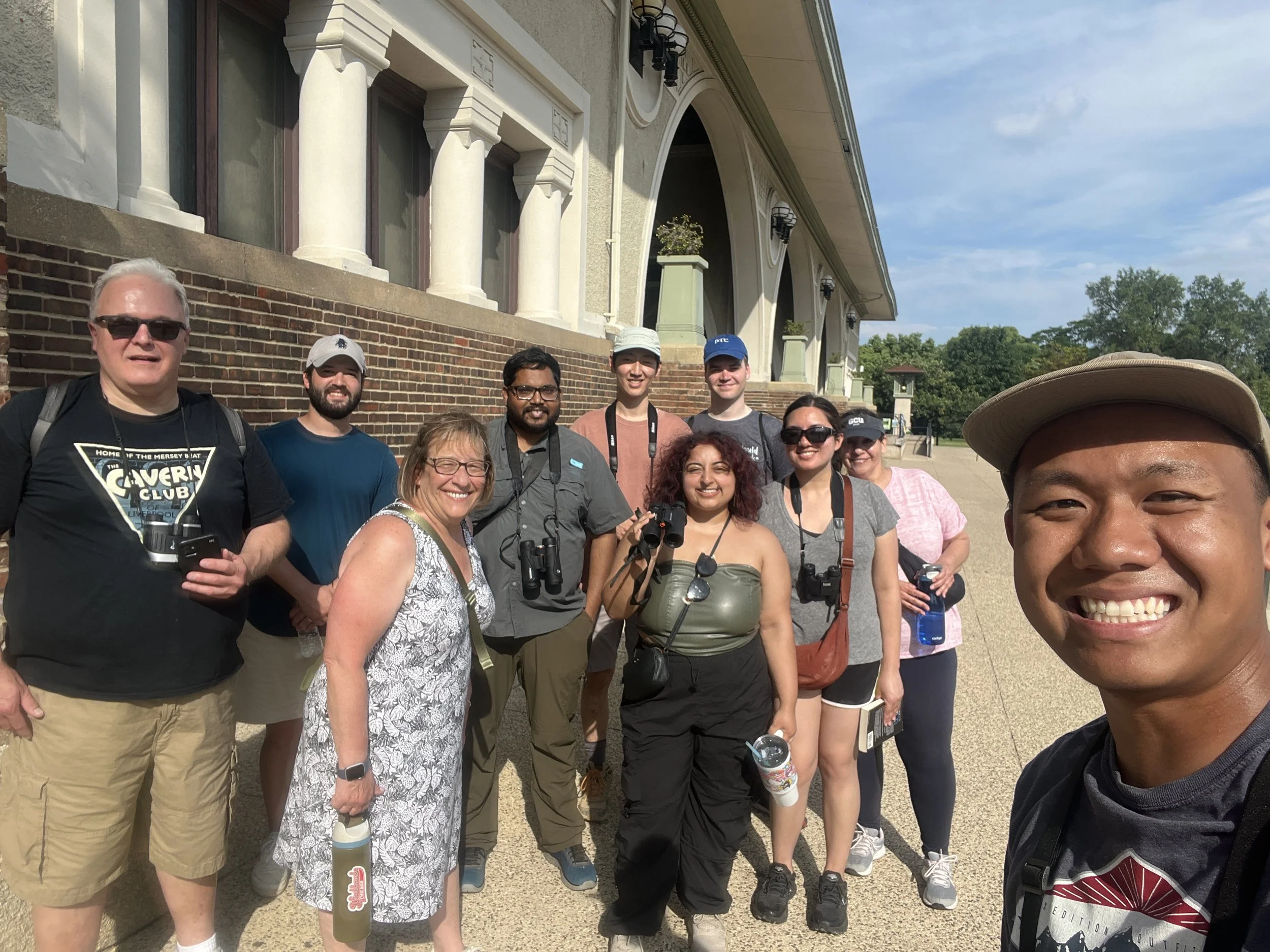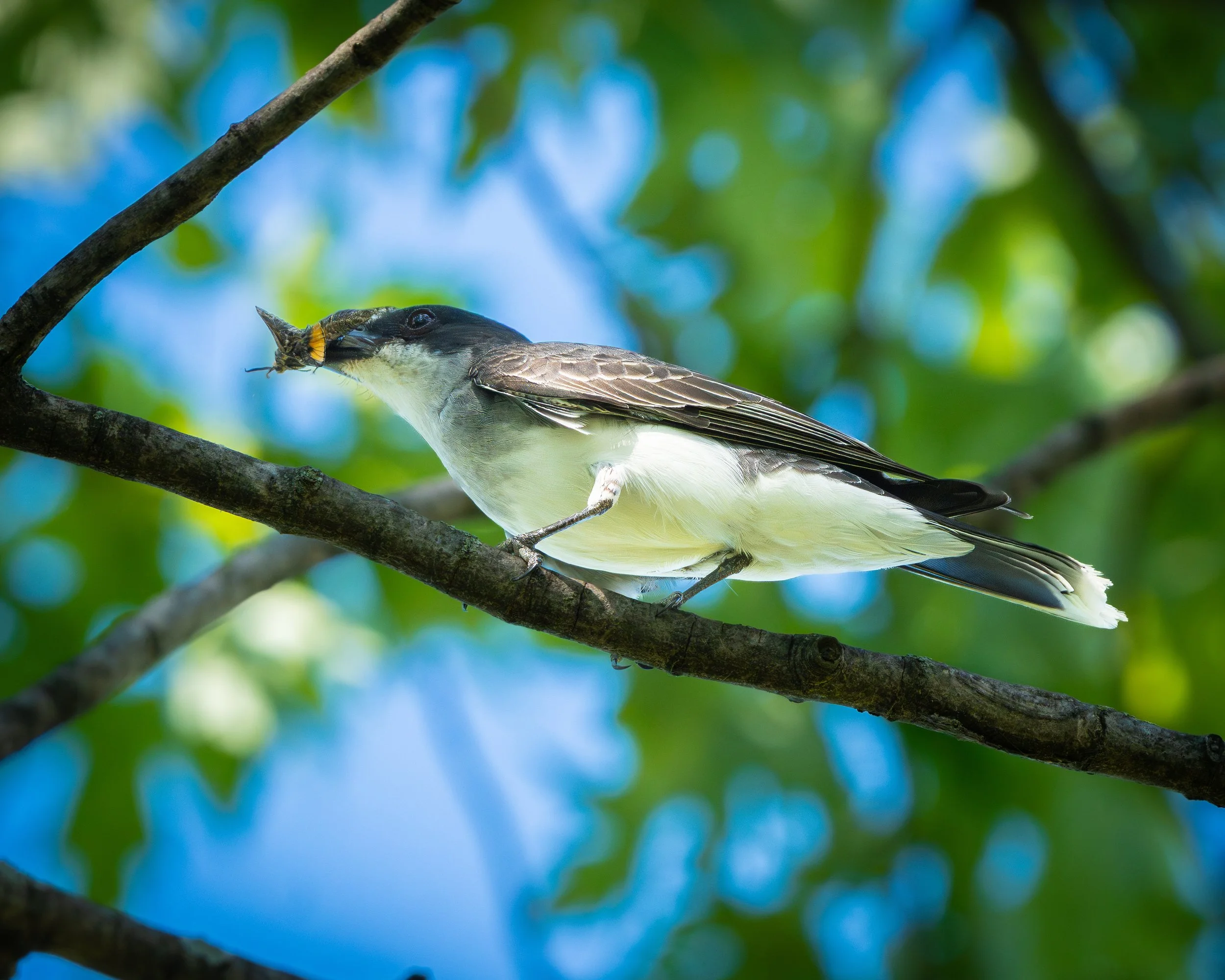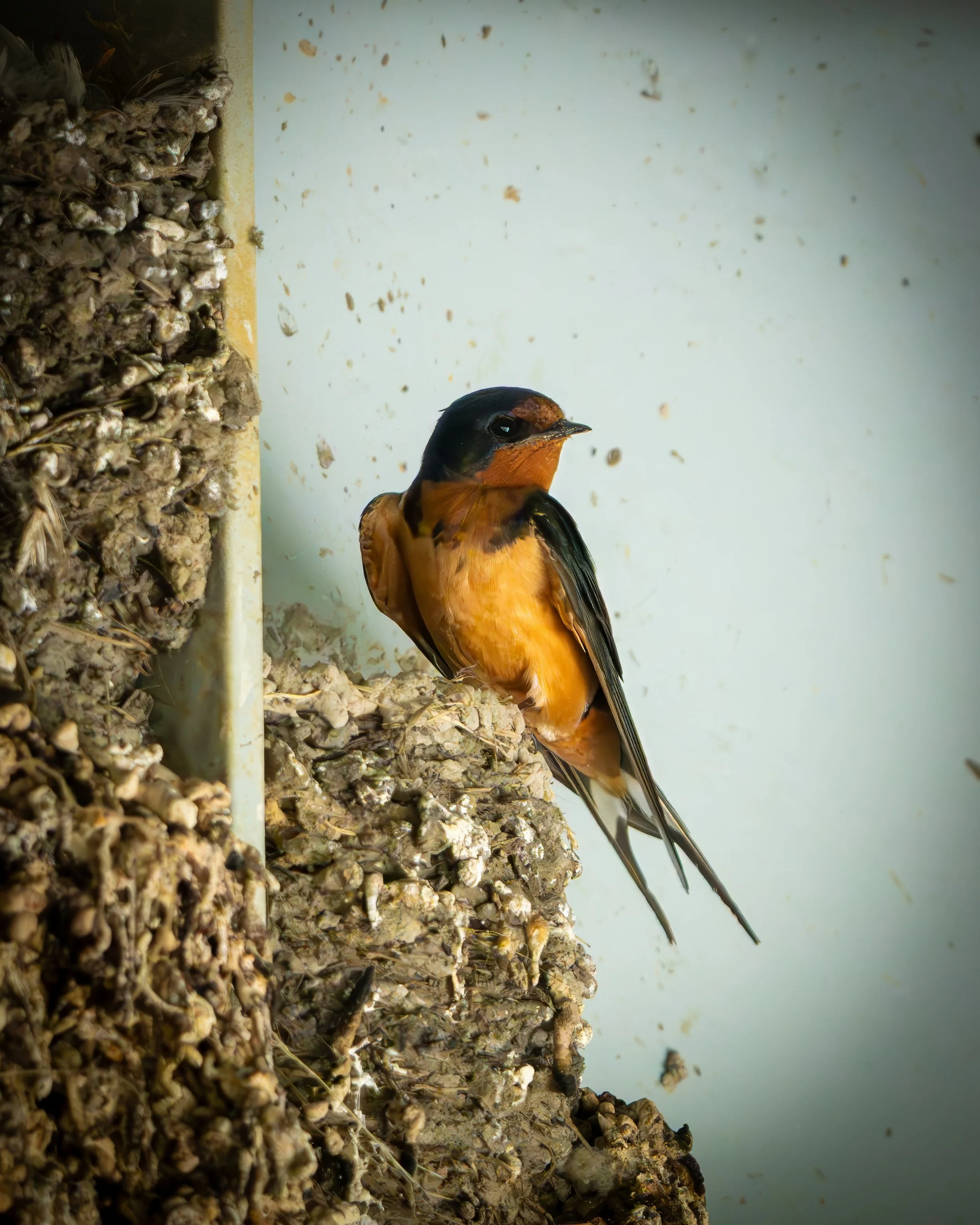Field Trip Recap: Humboldt Park Bird Walk for Families and Beginners
words by Sammy Cabindol
On the toasty, warm summer afternoon of June 29, nine novice birders joined Sammy at Humboldt Park to begin their birding journeys.
Even before the walk officially began, the group had an incredible bird encounter. Flying eastward from the park’s fieldhouse, the group watched as a large raptor approached the central lagoon. Its wings were bent at the wrists and it flapped with heavy, powerful strokes. The bird’s dark brown eye stripe became noticeable and the group realized what they were watching. An Osprey! The raptor remained in view for a few more minutes before disappearing into the Chicago skyline.
Eager to see what other birds would make appearances that day, the group began to round the lagoon’s southeast corner. The songs and calls of Red-winged Blackbirds filled the airwaves as Wood Ducks and Mallards foraged along the water’s edge.
Several Tree Swallows were seen perched on a branch above the water. They were barely above head level, so they were easily observed. Their brilliant blue-green colors shone in the afternoon sun, mesmerizing the group.
Eastern Kingbird. Photo by Madhu Nukathoti, Humboldt Park, June 29, 2025.
Just then, an Eastern Kingbird caught a tasty snack and perched on one of the close branches. The kingbird smacked its prey a couple times on the branch to ensure its death before consuming it.
Amongst the many Ring-billed Gulls and Herring Gulls circling around the lagoon was a lone Caspian Tern. The group watched in amazement as it made several hunting attempts and succeeded in capturing fish several times.
Barn Swallow and nest. Photo by Madhu Nukathoti, Humboldt Park, June 29, 2025.
The group made their way to the west bridge for the park’s Barn Swallow nesting colony. Here, there were many swallows of different ages from newborn to recently fledged individuals. The group could tell they were different from the recently seen Tree Swallows and Northern Rough-winged Swallows by the Barn’s long, forked tail feathers.
By the end of the walk, the group tallied 29 species for the hot afternoon.



